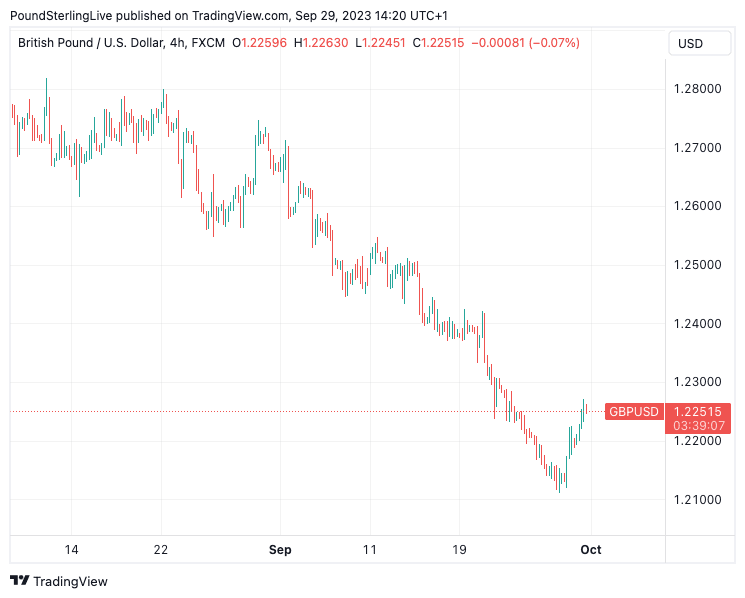Dollar Eases After U.S. PCE Inflation Confirms Price Pressures Continue to Ease
- Written by: Sam Coventry
-

Image © Adobe Images
The Pound to Dollar exchange rate (GBPUSD) could be on course to snap a run of weekly losses if the gains made in the wake of the U.S. PCE price index are held.
The price index - a key measure of consumer-focussed inflation that the Federal Reserve is highly attuned to - undershot expectations in August.
The core PCE index rose 0.1% month-on-month in August, which was less than the 0.2% expected and below July's 0.2%.
Year-on-year, the measure was down to 3.9% from 4.3%, which was in line with expectations.
The Dollar softened in the wake of the release amidst cooling U.S. bond yields and a shift lower in expectations for another Federal Reserve rate hike in 2023.
"The Fed's preferred inflation gauge, the core PCE deflator, cooled in August to its slowest rate of increase since November 2020," says Ali Jaffery, an economist at CIBC Capital Markets.
The GBPUSD exchange rate rose to a daily high at 1.2270 following the figures as it cemented a floor of support near midweek lows located in the 1.2110 area.
The data set revealed consumer spending increased 0.4% in August, which was below consensus expectations for a 0.5% gain and below last month's 0.8% surge.
Real spending edged up 0.1% in the month as the PCE deflator rose by 0.4% mainly reflecting higher energy prices.
Above: GBPUSD chart at four-hour intervals conveying the strength of the recent GBPUSD downmove. For now, the rebound can be considered a counter-trend profit-taking event.
Personal income came just below consensus expectations at 0.4%.
"Today's report tells the Fed that the persistence of inflation is becoming less of a problem, likely because of supply-side improvements," says Jaffery.
The Dollar surged in the wake of the Fed's September policy decision where it laid out expectations for another rate hike in 2023 and successfully pushed back against market expectations for the scale of rate cuts in 2024 in light of ongoing economic resilience and caution that inflation might prove more persistent.
The PCE figures suggest such fears, while unlikely to fade entirely, can be eased.
U.S. long-term bond yields surged in the wake of the Fed's decision, a signal that markets were buying the Fed's message that rates would stay elevated for a long period of time.
Although the PCE inflation figures alone won't halt such market dynamics, they could prove to be an important step towards confirming the recent moves might be overextended.







